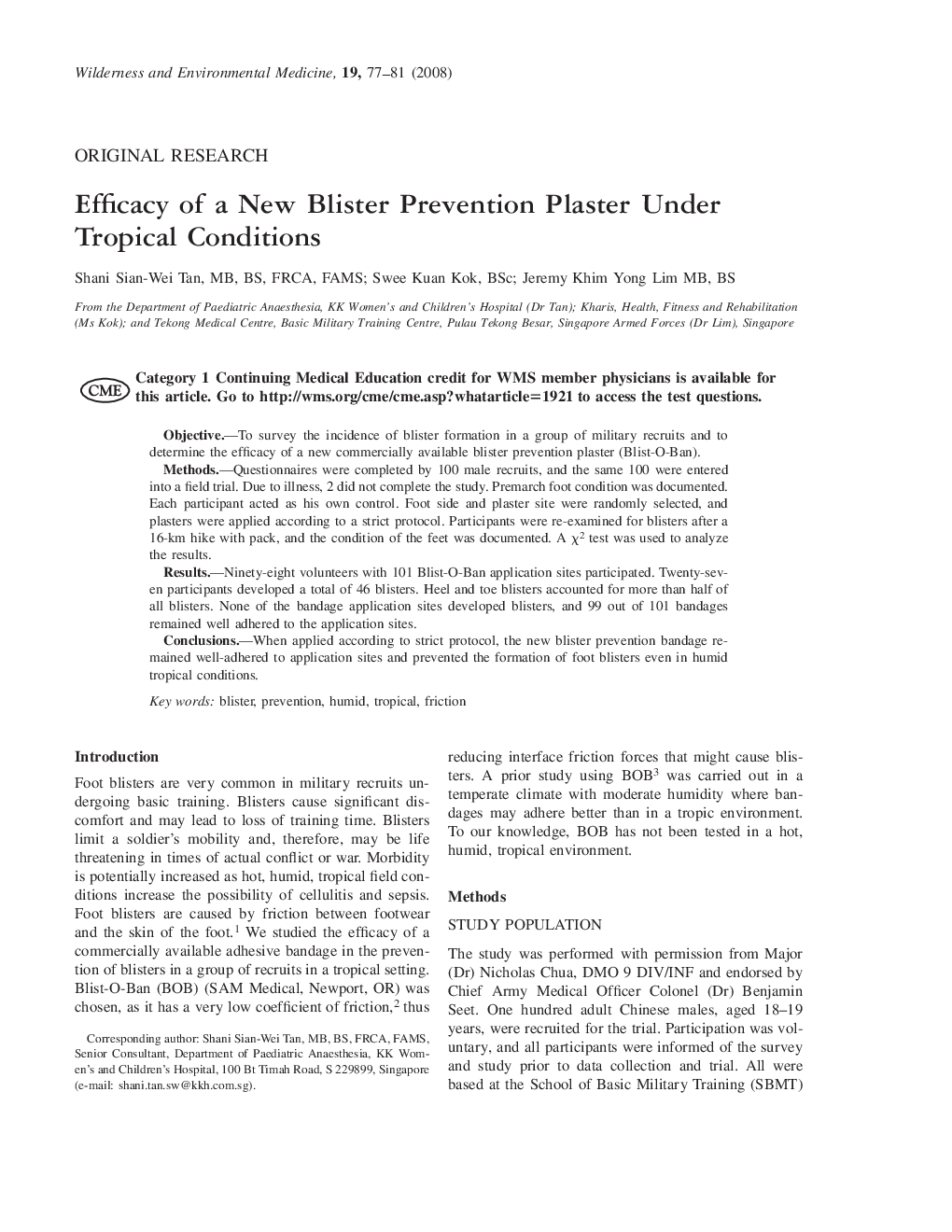| Article ID | Journal | Published Year | Pages | File Type |
|---|---|---|---|---|
| 2615212 | Wilderness & Environmental Medicine | 2008 | 5 Pages |
Category 1 Continuing Medical Education credit for WMS member physicians is available for this article. Go to http://wms.org/cme/cme.asp?whatarticle=1921 to access the test questionsObjectiveTo survey the incidence of blister formation in a group of military recruits and to determine the efficacy of a new commercially available blister prevention plaster (Blist-O-Ban).MethodsQuestionnaires were completed by 100 male recruits, and the same 100 were entered into a field trial. Due to illness, 2 did not complete the study. Premarch foot condition was documented. Each participant acted as his own control. Foot side and plaster site were randomly selected, and plasters were applied according to a strict protocol. Participants were re-examined for blisters after a 16-km hike with pack, and the condition of the feet was documented. A χ2 test was used to analyze the results.ResultsNinety-eight volunteers with 101 Blist-O-Ban application sites participated. Twenty-seven participants developed a total of 46 blisters. Heel and toe blisters accounted for more than half of all blisters. None of the bandage application sites developed blisters, and 99 out of 101 bandages remained well adhered to the application sites.ConclusionsWhen applied according to strict protocol, the new blister prevention bandage remained well-adhered to application sites and prevented the formation of foot blisters even in humid tropical conditions.
